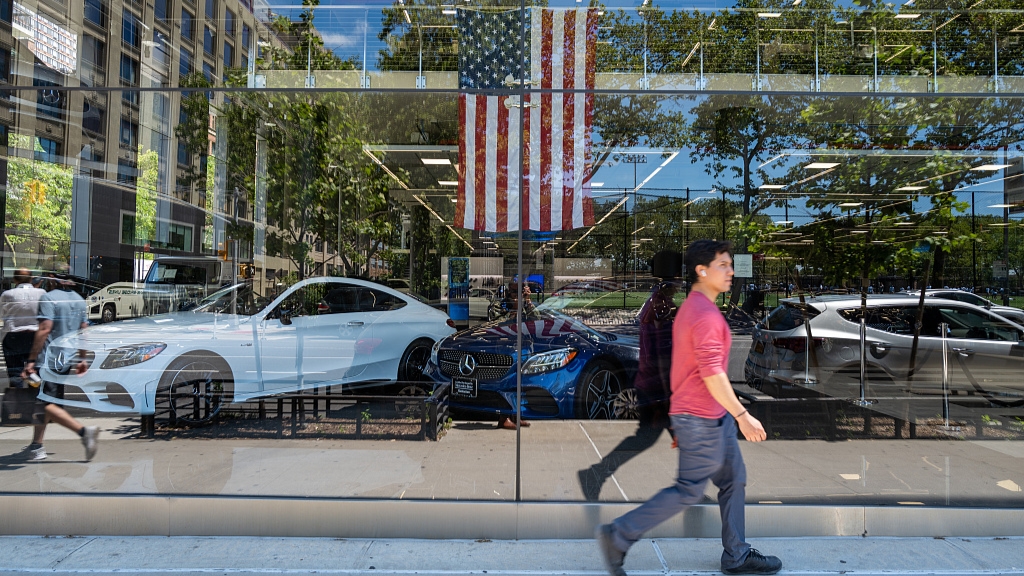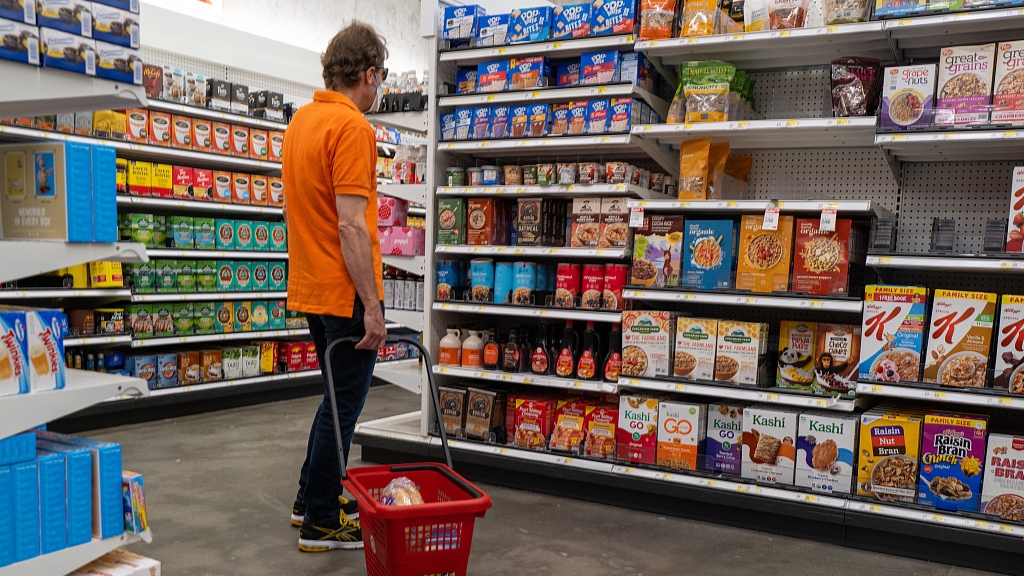
A person walks by a car dealership in New York, U.S., June 10, 2022. /CFP
A person walks by a car dealership in New York, U.S., June 10, 2022. /CFP
Editor's note: Jimmy Zhu is chief strategist at Fullerton Research. The article reflects the author's opinion, and not necessarily the views of CGTN.
The May U.S. Consumer Price Index (CPI) released last Friday immediately rattled the financial market, from stocks to bonds. Talks about the upcoming U.S. recession are expected to rise as the Fed will be forced to take more aggressive measures to control inflation.
Inflation in the U.S. accelerated further in May, with its CPI rising 8.6 percent from a year ago for the fastest increase since December 1981, and the reading is well above economists' earlier estimates at 8.3 percent based on Dow Jones' survey. Food, gas and energy prices rose the most, with fuel oil up 106.7 percent from a year ago.
Before the data was released, many market participants believed that inflation growth had peaked, but the latest inflation data quickly dampened such expectations, and many of them expect the Fed to take more aggressive measures to cool down prices. Moving into the second half of the year, inflation pressure is likely to bring more troubles to both the U.S. economy and its financial market.
Higher inflation will continue to push up the yield on U.S. government bonds as investors avert risks; this will further increase borrowing costs from corporate liabilities to personal debts. The U.S. 2-year government bond yield surged 25 basis points (bps) to 3.063 percent on Friday, the highest level since 2008.
Rapid increases in food and energy prices, along with soaring borrowing costs, have largely reduced Americans' spending power. This is what happens in the retail sector. As a result, the S&P retail exchange-traded fund, tracking the performance of the retail sector's stocks, has declined around 30 percent since the beginning of the year. In the past, the inflation environment usually benefited the retail sector, as higher prices boosted retailers' revenues as long as their inventories were sufficient.

A person shops at a grocery store in New York, U.S., June 10, 2022. /CFP
A person shops at a grocery store in New York, U.S., June 10, 2022. /CFP
The shortage in the supply chain means that many retailers have to buy goods at much higher prices than before. But that's not the main reason darkening the retailers' business outlook, the main issue is that U.S. consumers can't afford to purchase the same volumes of products as they bought before when CPI has been consistently staying above 8 percent over the past few months.
Another set of data released on Friday showed that persistent sticky inflation deteriorates the consumption activities in the U.S. The University of Michigan's preliminary June sentiment index fell to 50.2, from 58.4 in May, reading reached a record low. Plunging consumer confidence suggests that no rebound in consumption will be expected in the coming months, putting significant pressure on the entire U.S. growth outlook.
Inflation data heighten recession possibility
Weaker consumption activity itself may not trigger a recession in the next 12 months, but the Fed's more aggressive tightening pace will. After the inflation data was released, the U.S. bond market once again flashed the recession warning.
The spread between the U.S. 10-year and 2-year government bond yield narrows to around 1bps now, the curve potentially to invert again in the coming days for the first time since early April. In the past, inversion in the U.S. Treasury curve has been a reliable indicator of an upcoming recession. The gap between the two still stood above 20bps before the release of the CPI data last Friday.
The Fed has raised rates by 75 bps in the current tightening cycle since March, but the tightening measures have not eased the price measures. The May CPI data suggests that the Fed is at risk of losing control of inflation, and the central bank needs to take more aggressive measures to curb soaring prices.
CME's FedWatch tool currently shows a 25 percent chance of a 75bp rate hike this week, which would be the biggest increase since 1994. The Federal Open Market Committee minutes for the meeting in May put a 75bps rate hike in a single meeting off the table. We expect the Fed to continue raising rates by 50bps this week in the base-case scenario; however, we believe there will be increasing discussion on whether the 75bps rate hike is needed in the July meeting.
The market usually expects the Fed to ease monetary policy when consumption and business activity slow significantly. However, the current inflation outlook only forces the Fed to move in the opposite direction, increasing the likelihood that the recession will arrive earlier than the market currently anticipates. Most market participants still don't expect a recession to hit the U.S. economy in the next 12 months.
The U.S. financial situation is likely to deteriorate further from the current level, with a further sell-off in stocks and bonds. U.S. equities also tumbled after the release of the inflation report, with the Nasdaq composite index sliding 5.6 percent last week, the worst decline since January. We expect all three major U.S. stock indexes to decline further this week and fall below the lowest levels this year, set on May 20.
Read more: Yellen says she was 'wrong' about inflation path

